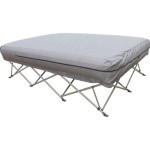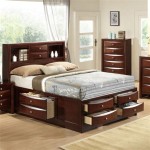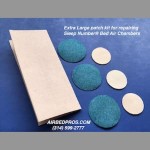Metal for Raised Garden Beds: A Durable and Versatile Option
Raised garden beds offer numerous benefits, from improved drainage and soil quality to increased accessibility and a more aesthetically pleasing garden. When choosing materials for a raised bed, metal stands out as a durable, versatile, and long-lasting option. Metal garden beds come in various materials, each with its own advantages and disadvantages. This article will explore the different types of metal used for raised garden beds, their pros and cons, and factors to consider when selecting the best metal for your gardening needs.
Types of Metal for Raised Garden Beds
Several types of metal are commonly used for raised garden beds, each possessing unique characteristics and benefits. These popular options include:
- Galvanized Steel: Galvanized steel is a common choice due to its affordability and resistance to corrosion. The zinc coating on this steel helps protect it against rust and weathering. Galvanized steel beds are typically sturdy but can be susceptible to denting and scratching.
- Aluminum: Aluminum is a lightweight and corrosion-resistant metal that requires minimal maintenance. Unlike steel, aluminum doesn't rust, making it highly durable, even in humid climates. However, aluminum is more expensive than galvanized steel.
- Copper: Copper is a naturally antimicrobial metal that can inhibit the growth of harmful bacteria and fungi. It also develops a beautiful patina over time. However, copper is expensive, and its antimicrobial properties may not be significant enough to impact plant health directly.
- Stainless Steel: Stainless steel is the most expensive metal option but offers exceptional durability and resistance to corrosion. It is the most resistant to rust and can withstand harsh weather conditions. Stainless steel beds are strong and can last for many years.
Advantages of Metal Raised Garden Beds
Metal offers several advantages over other materials for raised garden beds, contributing to their popularity among gardeners:
- Durability and Longevity: Metal beds are renowned for their durability and longevity, lasting for many years with proper maintenance. They can withstand harsh weather conditions, including heavy rain, snow, and strong winds, ensuring a long-lasting gardening solution.
- Pest and Disease Resistance: Metal beds are more resistant to pests and diseases than wooden beds. They don't harbor insects or rot like wood, minimizing the risk of infestation. Metal also discourages rodents from burrowing into the garden bed.
- Low Maintenance: Metal beds require minimal maintenance compared to other materials. They don't need to be painted or treated regularly, reducing the effort involved in maintaining your garden.
- Versatility and Aesthetics: Metal beds come in various shapes, sizes, and styles, offering versatility in garden design. They can be painted or customized to blend with your garden's aesthetic, enhancing its visual appeal.
- Easy Assembly and Installation: Metal beds are generally easier to assemble and install than other materials. They often come in prefabricated kits or modular sections, simplifying the construction process.
Factors to Consider When Choosing Metal for Raised Garden Beds
When selecting the best metal for your raised garden beds, several factors should be considered:
- Budget: The cost of metal beds varies significantly depending on the material. Galvanized steel is the most affordable option, while stainless steel is the most expensive. Consider your budget and choose a metal that fits your financial constraints.
- Climate: The climate in your region plays a crucial role in choosing the appropriate metal. If you live in a humid or coastal area, choose a corrosion-resistant metal like aluminum or stainless steel. Galvanized steel is suitable for less humid climates.
- Garden Size and Shape: Consider the size and shape of your garden and the dimensions of the metal beds. Choose beds that are appropriate for the available space and your gardening needs.
- Maintenance Requirements: While metal beds require minimal maintenance, some metals require more attention than others. For example, galvanized steel may need occasional touch-ups to prevent rusting, while stainless steel is virtually maintenance-free.
- Personal Preferences: Ultimately, consider your personal preferences when choosing metal for your raised garden beds. Some gardeners prefer the rustic look of weathered steel, while others prefer the sleek and modern aesthetic of aluminum or stainless steel.

Galvanized Steel Raised Garden Beds Plans Tutorial Growfully

Metal Raised Garden Beds Vs Wood Vego

How To Make A Raised Garden Bed Last 25 Years With Plans Ptr

Original 6 In 1 Modular Metal Raised Garden Bed Kit Huw Richards

Veikous 8 Ft X 2 1 4 Galvanized Raised Garden Bed 9 In Planter Box Outdoor Dark Gray Pg0102 06gy The Home Depot

Raised Garden Beds Galvanized Metal Vs Wood Huw Richards

Raised Bed With Galvanized Tin Metal Garden Beds Tall Building A

Building Our Raised Beds The Prairie Homestead

Raised Garden Bed Materials What S Good Epic Gardening

The Best Choice For Corrugated Metal Raised Bed Garden Vegega
Related Posts







